

Challenges Faced by E-Learning Managers: Insights from Recent Study
E-Learning Managers’ Perspectives on Training Effectiveness
Introduction
In the rapidly evolving landscape of corporate training, e-learning has become a dominant method for skill development and knowledge enhancement. However, a recent survey conducted by E-Communications Inc., involving 111 e-learning managers from large corporations with over 1,000 employees, has highlighted some pressing challenges within this domain.
The survey revealed that nearly 80% of these managers perceive that more than 40% of training sessions consist of merely going through the motions without genuine engagement. In contrast, around 90% reported that upper management often seeks explanations regarding the effectiveness of their e-learning programs. This article delves deeper into the key findings from this survey and explores how organizations can address these challenges.
Key Survey Findings
1. Demand for E-Learning Effectiveness Reports
A staggering 89.6% of e-learning managers indicated they frequently (26.1%) or occasionally (59.5%) face queries from upper management regarding the impact of e-learning initiatives. Key metrics that these managers are asked to evaluate include:
- - Application of skills in the workplace: 58.9%
- - Test accuracy rates: 56.8%
- - Enrollment and completion rates: 51.6%
This data suggests a critical need for e-learning managers to articulate the tangible benefits of their programs, highlighting the necessity for more robust assessment methods.
2. Prevalence of Superficial Participation
Approximately 80% of respondents recognized that superficial engagement, or mere completion of courses without real learning, is prevalent among employees. The primary cause identified for this issue is a lack of interest in the learning material, cited by 65.1% of respondents. Other contributing factors include:
- - Employee workloads: 45.3%
- - Insufficient understanding of the training’s importance: 34.9%
This indicates a broader cultural problem within organizations that undermines the efficacy of e-learning.
3. Effective Measures to Combat Superficial Engagement
When asked about strategies to eliminate superficial participation, respondents highlighted that implementing confirmatory assessments related to the training content is perceived as the most effective approach (24.6%). Other noted methods include:
- - Remote monitoring through webcams: 21.7%
- - Submission of practical assignments: 21.7%
These strategies not only encourage genuine engagement but also enhance accountability among learners.
4. Importance of Confirmation Mechanisms
An overwhelming 91% of managers confirmed they actively check whether employees engage meaningfully with e-learning content. The primary methods employed to verify participation include:
- - Submission of reports: 63.4%
- - Conducting assessments: 53.5%
These measures reflect a recognition of the need for accountability in e-learning programs.
5. Responding to Management's Expectations
A vital aspect of this challenge is the need for e-learning managers to prepare adequate responses when questioned by upper management about training effectiveness. A significant 91.6% of respondents admitted to having experienced difficulty in providing clear answers regarding the impact of e-learning initiatives during such inquiries.
Conclusion
The survey results underscore the challenges faced by e-learning managers in large enterprises, particularly regarding superficial engagement and the demand for demonstrable effectiveness. As digital learning environments evolve, it becomes essential not only to measure completion rates but also to assess the learners’ understanding and application of material in their work. The solutions lie in a combination of technological tools, such as remote monitoring systems, alongside strategies to foster a deeper interest in learning content among employees.
With effective measures in place, organizations can create a more influential e-learning experience that goes beyond traditional metrics, ultimately leading to enhanced employee performance and organizational success.
For a detailed overview of the survey, click here: Survey Download
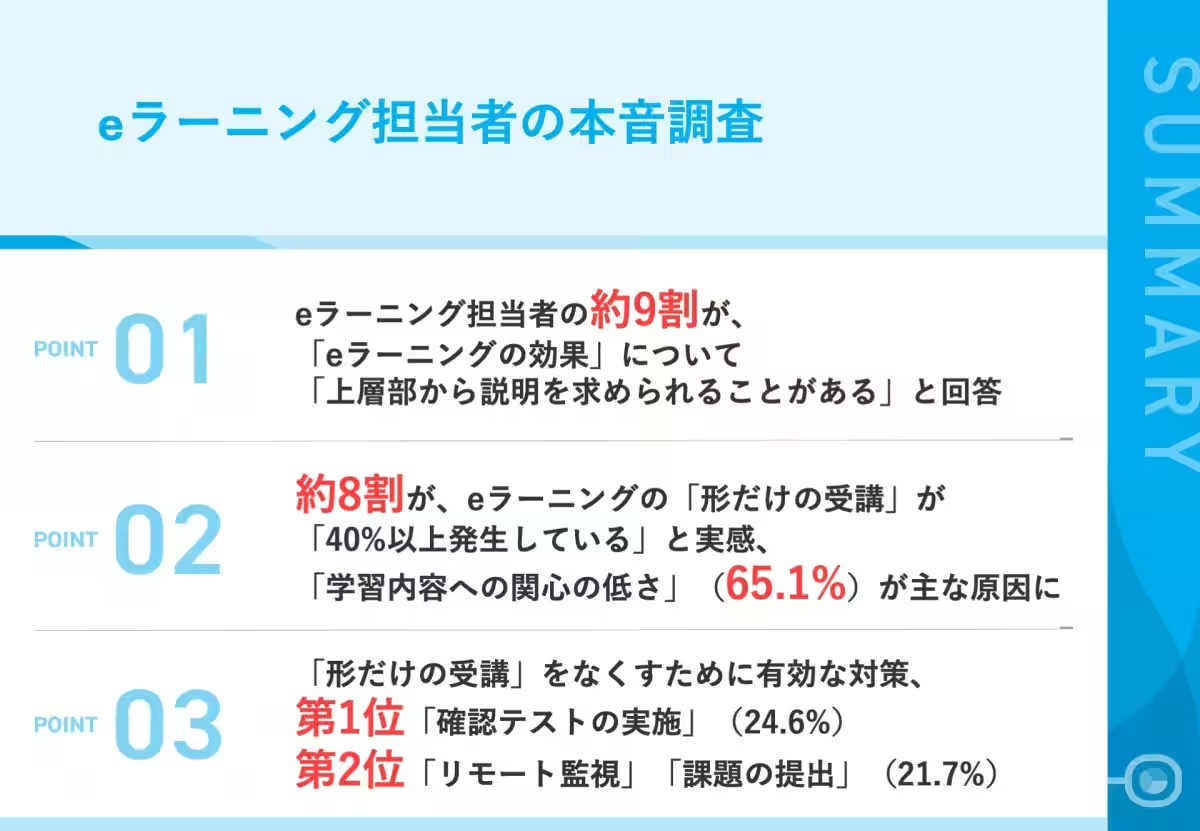
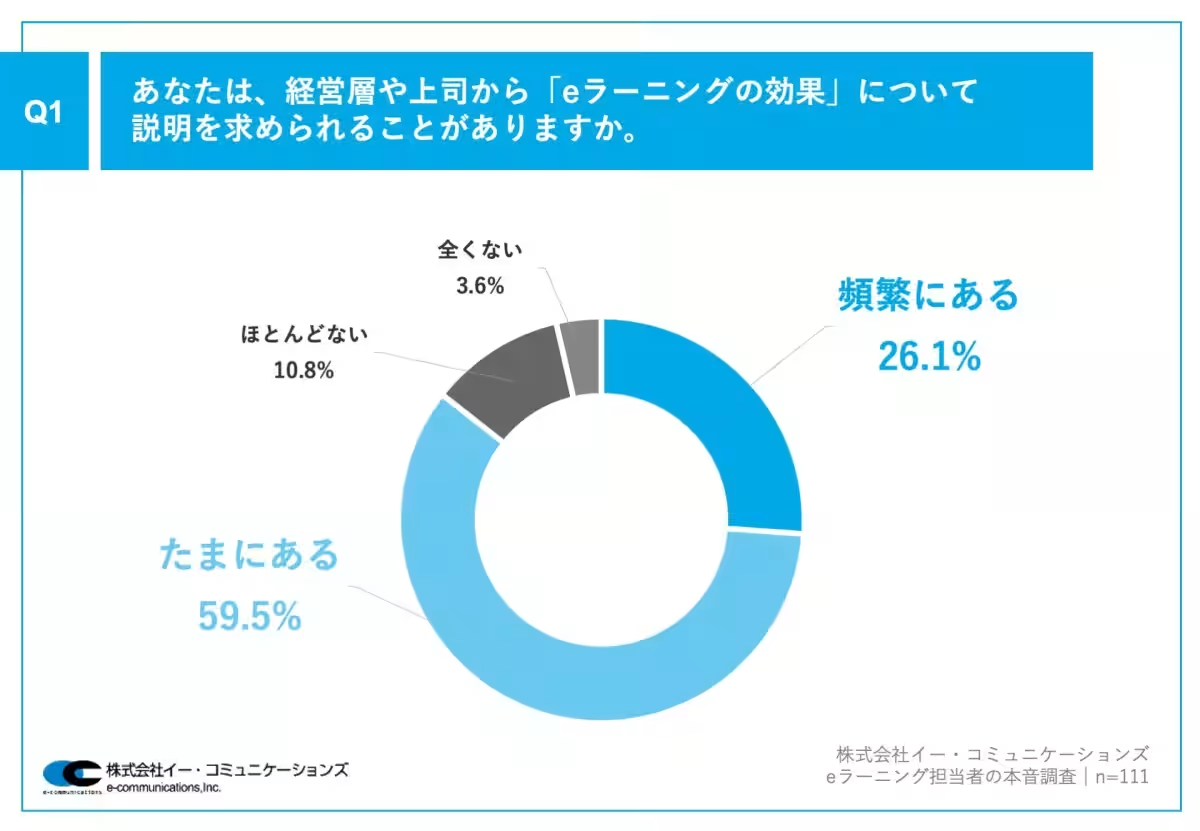
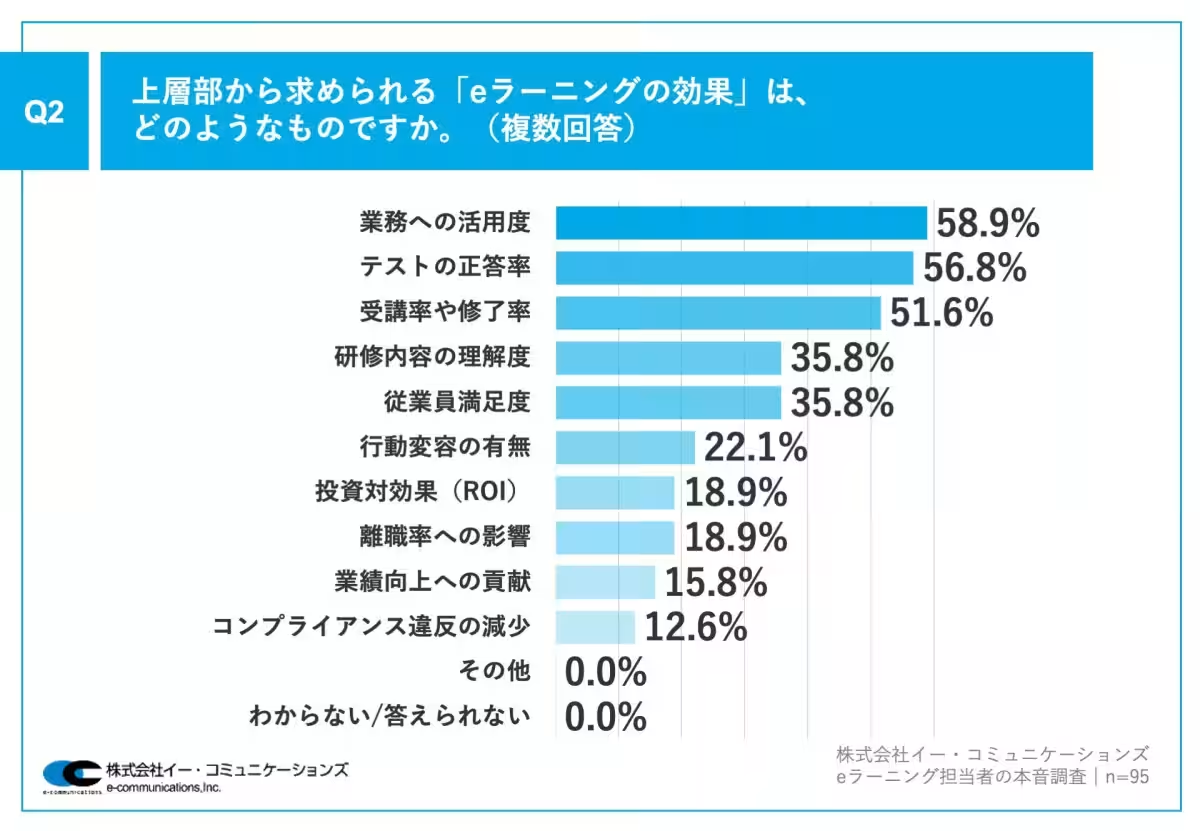
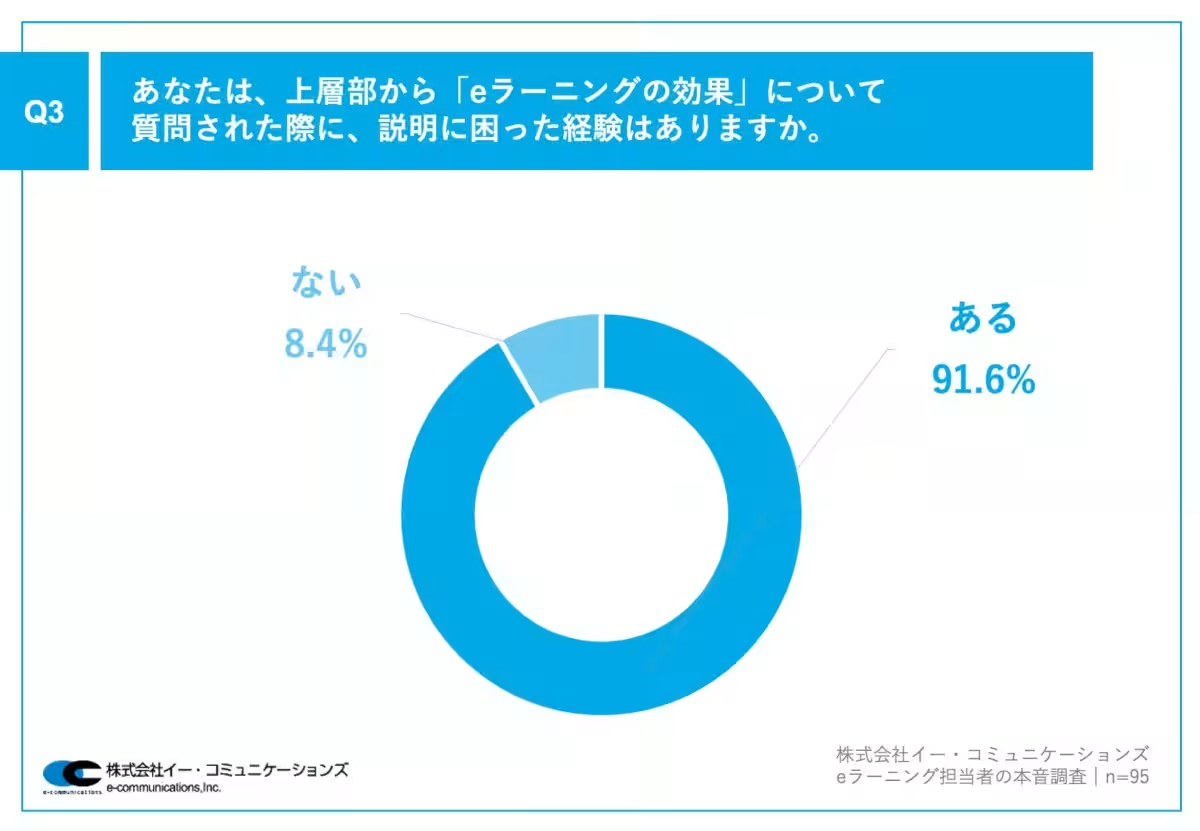
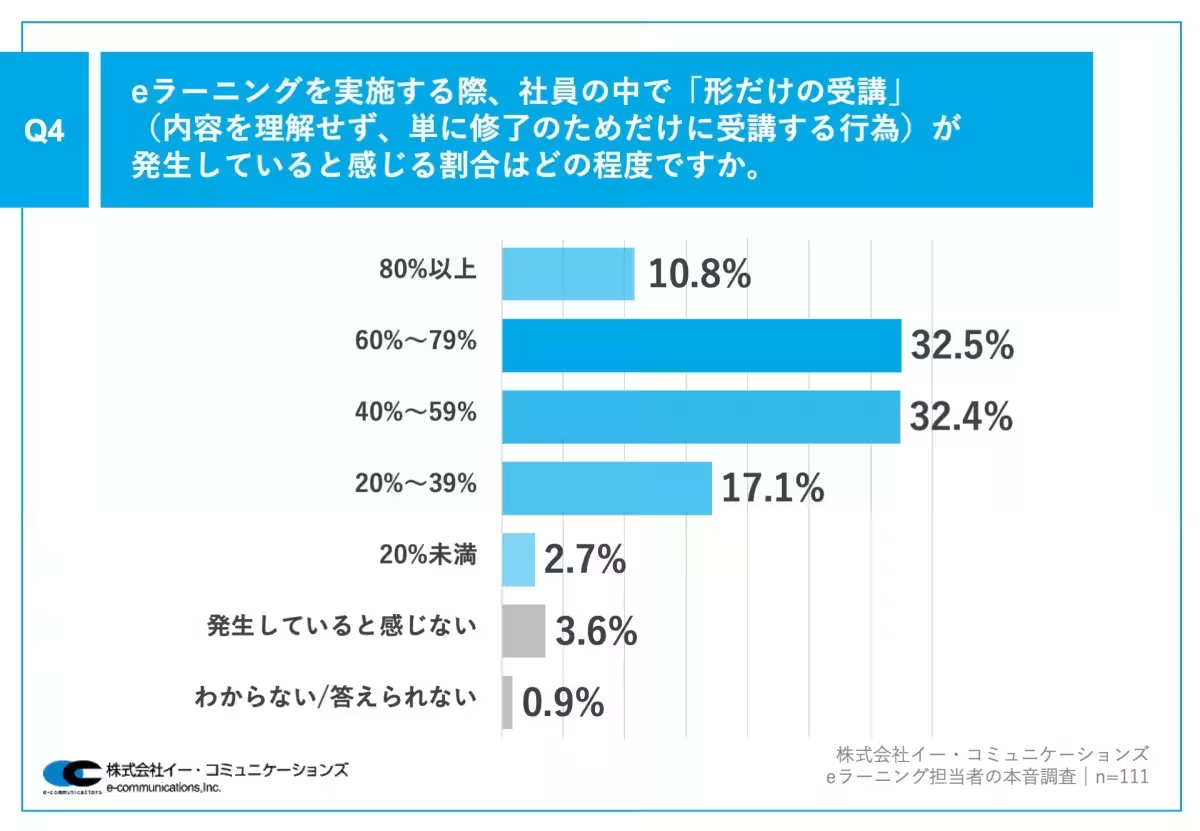


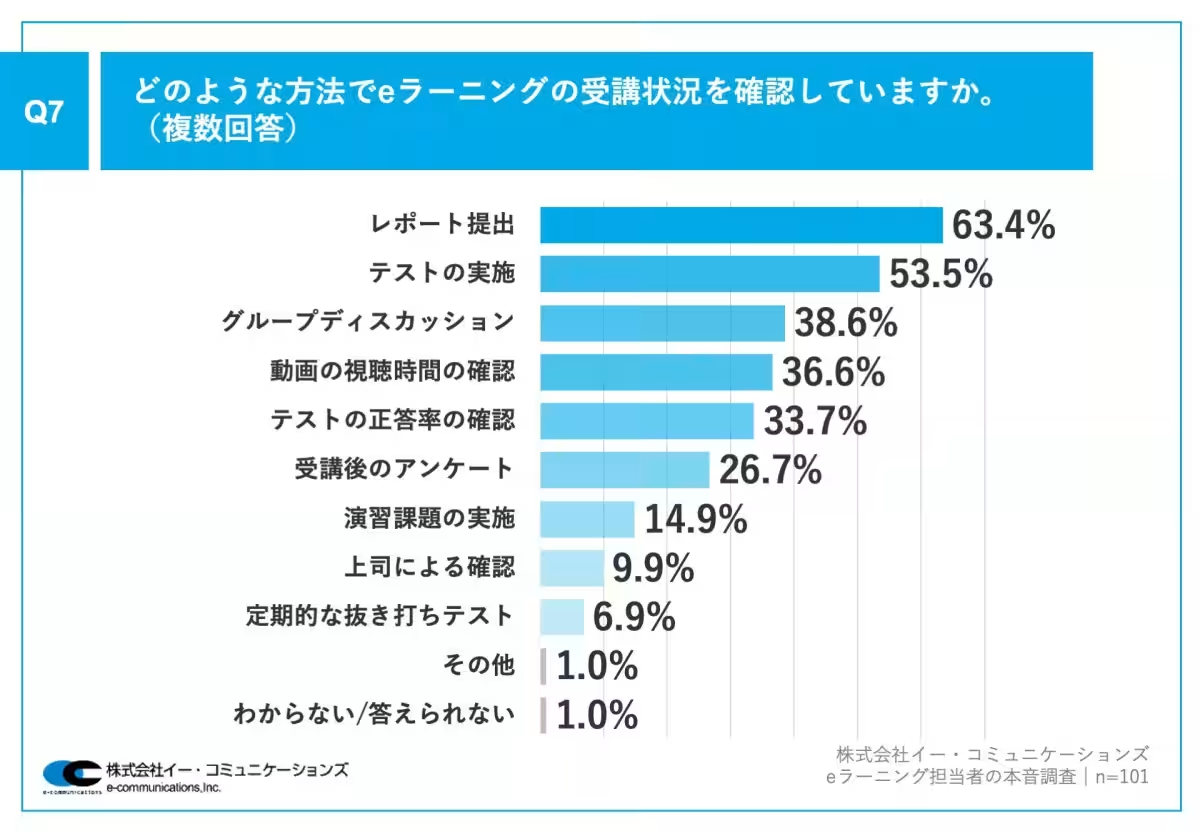
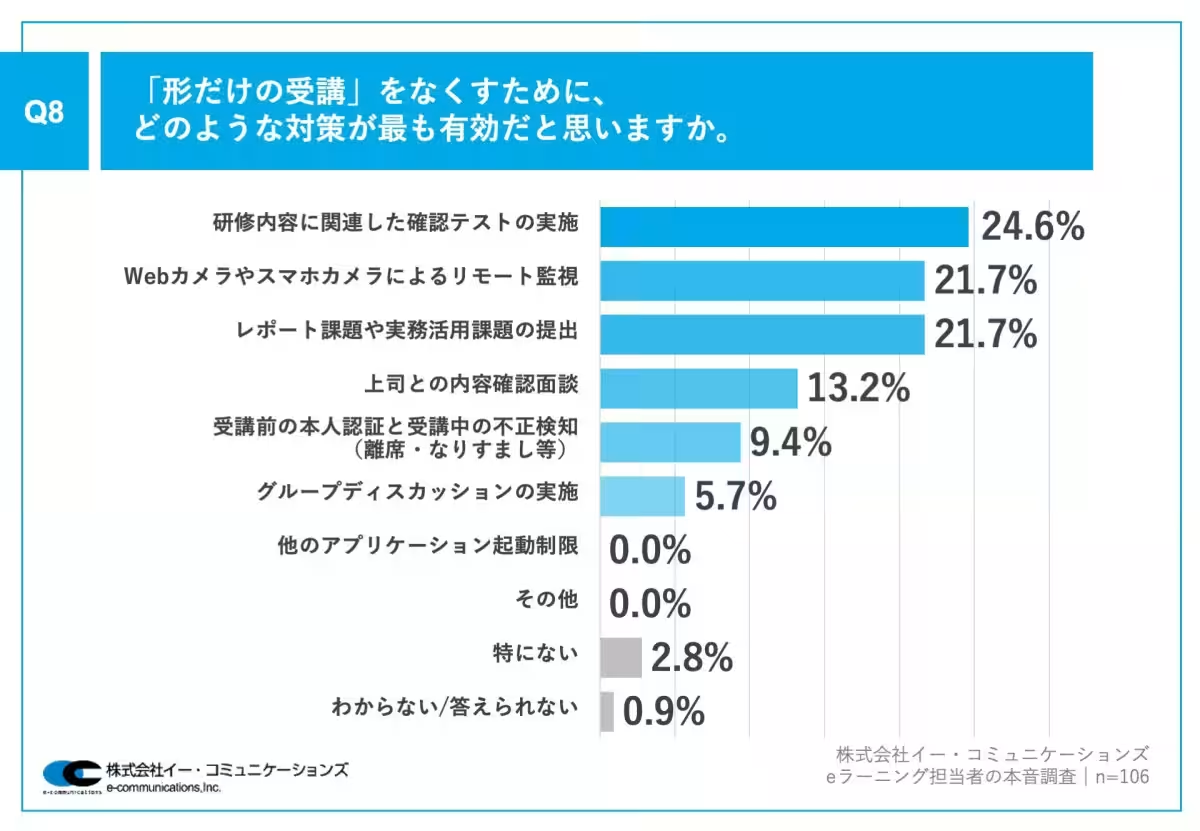
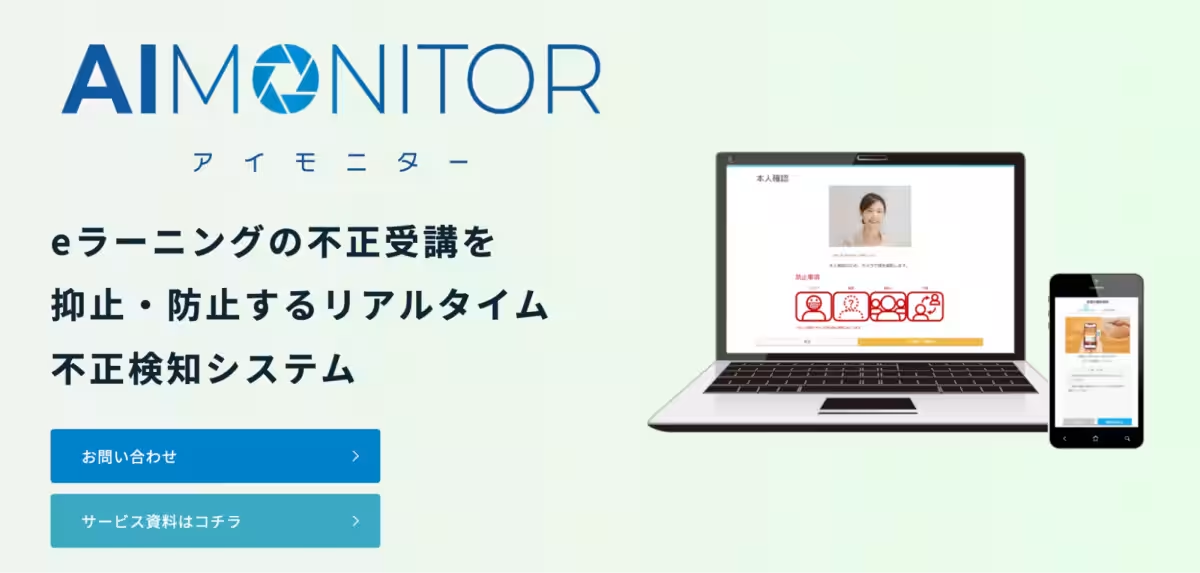
Topics Other)










【About Using Articles】
You can freely use the title and article content by linking to the page where the article is posted.
※ Images cannot be used.
【About Links】
Links are free to use.